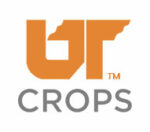Evaluating Nitrogen Stabilizers and Placement at Side-dress N in Dryland Corn Production
Research was funded by the Tennessee Corn Promotion Board
Research was funded by the Tennessee Corn Promotion Board Nutifafa Adotey, Assistant Professor & Soil and Nutr. Magt Specialist Angela McClure, Professor Emeritus & Corn and Soybean Specialist Xinhua (Frank) Yin, Professor & Cropping System Scientist, University of Tennessee
Introduction
Nitrogen (N) fertilizer is required at an adequate amount during the growing season for optimal seed quality and corn yield. A typical N management practice for most corn producers in TN is to split-apply a third of the recommended N at planting and sidedress the remaining N fertilizer. Currently, the commonly used N fertilizer sources by corn producers in TN are urea and urea ammonium nitrate (UAN) due to their economic advantage and minimal logistical constraints compared to other N sources. However, a major downside with these N sources is their susceptibility to N loss from ammonia volatilization. Broadcast or surface application of urea allows an applicator to cover a significant number of acres in less time compared to UAN. However, UAN provides uniform application and is generally less susceptible to ammonia loss than urea. N stabilizers are management tools to minimize N loss via ammonia volatilization and optimize N uptake. Depending on the nitrogen fertilizer source and placement used, a nitrogen stabilizer may be beneficial and improve corn yields. In this work we (1) Measured ammonia losses from sidedress surface UAN and urea treatments with and without N stabilizers, (2) Evaluated commonly used sidedress UAN and urea with and without N stabilizers on corn yield, and (3) Compare sidedress UAN placement methods (broadcast spray, row middle, Y-drop, injected) on corn yield.
Research Methodology
Plots were four rows wide x 30 feet long and each treatment was replicated four or six times depending on the year in a randomized complete block design. At-planting, 60 lbs N/acre (ammonium nitrate or treated urea) was spread with a 10-ft Gandy drop spreader. Side-dress N was applied between V4 – V6 stage corn at 120 lbs N/acre. The 13 N treatments evaluated in this trial were a combination of N stabilizers with sidedress N placement methods (Table 1; Figure 1)). Only 9 N treatments (the treatments with asterisks in Table 1) were evaluated for ammonia volatilization due to logistical constraints. Information about the EENFs used in this work are listed in Table 2. All dry N fertilizers were weighed according to N content and rate, bagged, and then hand spread uniformly across plots. Ammonia volatilization losses were monitored using a semi-open, static chamber method by Dillion et al., 2012 (Figure 2). Chambers were installed in the middle row within plots. The air temperature both inside and outside the tube was measured using HOBO Pendant Temp/Alarm 8K data loggers. Ammonia loss was measured on 1, 3, 5, 7, 9, 11, 13, and 21 days.


Findings
Ammonia volatilization
Surface broadcast urea (24% of applied sidedress N) is much more susceptible to ammonia volatilization when compared to surface broadcast (17% of applied sidedress N) and dribbled (13% of applied sidedress N) UAN at the same application rate in soil with pH less than 7. Also, surface broadcast UAN was more susceptible to ammonia volatilization compared to UAN dribbled in between rows. All the EENFs products evaluated in these trials reduced ammonia loss from untreated urea by 50 to 90% and untreated UAN by 40 to 51% (Figure 3).
Grain yield
Due to in season drought, grain yield data in 2022 was not included in this report. Among the liquid fertilizer placement methods, the average yield of broadcast UAN across both years was lower than the other placement methods (Figure 4). The Y-drop placement and dribble between the rows were as effective as injecting UAN behind a coulter without any ANVOLTM stabilizer. Yield was not improved by adding ANVOLTM stabilizer when injecting UAN in-ground. However, a yield increase was observed when ANVOLTM stabilizer was added to both dribble and Y-drop applications. Addition of ANVOLTM to row-middles (dribble) increased yield the most (+11 bu/A), followed by broadcast UAN (+9 bu/A), and then Y-drop. Of the granular materials tested, untreated urea and ammonium nitrate yielded the least and highest respectively. Super U, urea + ANVOLTM, and ESN out-yielded the untreated urea by +15, +18, +19 bu/A, respectively. Generally, the untreated UAN out-yielded untreated urea by 5 to 15 bu/A. However, when urea and UAN were treated with ANVOLTM, only the row middle dribble treatment out-yielded ANVOLTM urea. Grain yield was highly but negatively correlated (R2 = 0.88) with ammonia volatilization (Figure 5), implying ammonia volatilization loss resulted in a yield penalty.



Conclusion
Results from this study demonstrate Tennessee producers have multiple options to apply sidedress liquid or dry N successfully in corn for optimal grain yield. Surface-applied urea or UAN tends to more susceptible to N loss via ammonia volatilization, therefore, require an EENF for optimal results.





